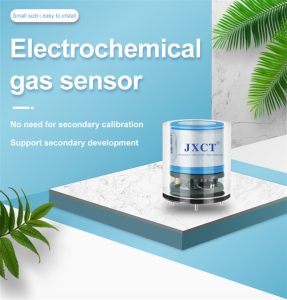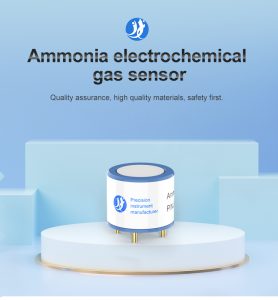Background:
With the development of science and technology, the application of gas sensors is becoming more and more widespread. Driven by ubiquitous applications such as the Internet of Things, the development direction of gas sensors begins to develop towards miniaturization, integration, modularization and intelligence. Electrochemical sensors are popular in the field of gas detection because of their linear output, low power consumption and good resolution. In addition, the electrochemical gas sensor has better repeatability and accuracy than other sensors. After decades of technology development, electrochemical gas sensor have a very good selectivity for specific gas monitoring.
At the beginning, electrochemical sensors were used to monitor oxygen concentration. With the evolution of technology, electrochemical sensors began to be used to monitor and detect a variety of different toxic gases within the LEL range, and electrochemical sensors have shown good sensitivity and selectivity in practical applications, so until now, Electrochemical sensor is also the main sensor for monitoring gas concentration. At present, electrochemical sensors have been widely used in many static and mobile applications, and play an important role in a variety of gas monitoring in the field. The following xiaobian briefly introduces the related knowledge of electrochemical gas sensors:
One, the principle of electrochemical sensor:
Most electrochemical gas sensor are used in diffusion mode, in which a sample of gas from the surrounding environment enters the sensor through a small hole on the front of the sensor (natural flow of gas molecules). Some devices use an air pump to draw air/gas samples into the sensor. A breathable film is installed in the air hole to prevent water or oil from entering the sensor. The measurement range and sensitivity of the sensor can be changed by adjusting the inlet size at design time. Larger air inlet can improve the sensitivity and resolution of the equipment, while smaller air inlet can reduce the sensitivity and resolution, but can increase the measurement range.

The composition of two, | electrochemical sensor:
1. Breathable film (also known as hydrophobic film)
A permeable film is used to cover the sensor (catalytic) electrode and in some cases to control the molecular weight of the gas reaching the electrode surface. Such barriers are usually made of teflon films with low porosity. This type of sensor is called a coated sensor. Alternatively, a high porosity teflon membrane can be covered with a capillary to control the molecular weight of the gas reaching the electrode surface. Such sensors are called capillary sensors. In addition to providing mechanical protection for the sensor, the film also has the function of filtering out unwanted particles. In order to transfer positive molecular weight of gas, the correct aperture size of film and capillary is needed. The aperture size should allow sufficient gas molecules to reach the sensing electrode. The aperture size should also prevent leakage or rapid drying of the liquid electrolyte.
2, the electrode
The choice of electrode material is very important. The electrode material should be a catalytic material capable of performing semi-electrolysis reactions for a long time. Typically, electrodes are made of precious metals, such as platinum or gold, that react effectively with gas molecules after being catalyzed. Depending on the design of the sensor, the three electrodes can be made of different materials to complete the electrolysis reaction.
3. Electrolytes
The electrolyte must be able to perform an electrolytic reaction and efficiently transfer an ionic charge to the electrode. It must also form a stable reference potential with reference electrodes and be compatible with the material used in the sensor. If the electrolyte evaporates too quickly, the sensor signal weakens.
4. Filter
Sometimes a scrubber filter is installed in front of the sensor to remove unwanted gas. The selection of filters is limited, and each filter has a different degree of efficiency. The commonly used filter material is activated carbon. Activated carbon filters out most chemicals, but not carbon monoxide. By selecting the right filter material, the electrochemical sensor can be more selective for its target gas.

Three, the working method of electrochemical sensor:
The main working method of electrochemical gas sensor is to produce chemical reaction with the measured gas and produce electrical signals proportional to the concentration of the gas to work. A typical electrochemical sensor consists of a sensing electrode and a counter electrode separated by a thin electrolytic layer. The gas reacts with the sensor through tiny capillary openings and then reaches the surface of the electrode through a hydrophobic barrier. This method allows the right amount of gas to react with the sensor electrode to form a sufficient electrical signal, while preventing electrolyte leakage from the sensor.
 : +86 155 8830 2704
: +86 155 8830 2704 : jxdziot@gmail.com
: jxdziot@gmail.com
